CCCC 2019 Cruise to Pink Shell Beach Resort and Marina, Matanzas Pass, Gulf Coast
CAPE CORAL CRUISE CLUB
CRUISES TO PINK SHELL MARINA
By Captain John Queen, Past Commodore, Cape Coral Cruise Club
Each month, the Cape Coral Cruise Club takes a scheduled cruise to a different marina in SW Florida and stays there for several days enjoying the amenities and hospitality of that area. We do that nine times a year along with an extended cruise each Spring and take a break during the summer months of July and August. For February 2019, our destination of choice was Pink Shell Marina at Fort Myers Beach.
Pink Shell has always been a popular destination for the club and this cruise was no exception. We had 17 boats arrive on Tuesday, February 19th and it was nice to see the long path of yellow club burgees flying on the bow of each boat. Our club burgee sports our club mascot – a dolphin holding a drink of some sort (an adult beverage, I would surmise). After safely docking Tuesday, club members convened in the late afternoon for cocktails, snacks and conversation.
We fired up the marina’s grill around 5:00 and cooked up hamburgers and hot dogs, and along with a slew of side dishes prepared by club members, had a wonderful feast on the marina lawn.
After dinner, club members met in the Mariner’s room at the resort for a competitive little game I called the “Bagel Finagle”. Each year, when my wife Pati and I host the club’s cruise to Pink Shell, I’ve created some kind of crazy game for members to play we and provide prizes for 1st, 2nd and 3rd places. The object of this game was to transfer 3 bagels from one end of the room to their waiting spouse at the other end of the room, and then walk back and deposit into a bucket. Easy enough, eh…? Not by my rules!
The first bagel had to be placed on the forehead, and without touching it, walked across the room and back. The second bagel was a little trickier where a straw was used to transport the bagel. The third round was the most difficult. In that trip, a spouse had to carry the bagel on their forehead across the room to their waiting spouse and then sandwich the bagel between their foreheads and shuttle back to the waiting bucket. It was a hoot watching everyone do the ‘bangle dance’ with a bagel stuck between their heads!
Wednesday morning, we provided breakfast for all club members consisting of scrambled eggs, sausage links, fresh fruits and pastries.
After breakfast, club members met at the marina lawn at 10:00 for second game – a scavenger hunt! The scavenger hunt consisted of 10 questions where all the answers can be found on the property of the Pink Shell Resort and Marina. Many of the questions consisted of simple math. For example, one question was “Dusseldorf plus Chicago minus the number of planks on the marina gangway”. The marina sports a pole sign with distances in miles to various destinations. So this question was fairly easy, until club members were forced to manually count all 120 planks on the marina ramp! The Marina sports a sign post with distances from it, in miles, to various destinations. This question was quite easy, until Club members realized they had to manually count the 120 planks on the pier access gangway.
The rest of Wednesday found many club members relaxing in the pool, walking the beach, or shopping downtown Fort Myers Beach at Times Square. Wednesday evening, we all took the open-air tram to Nervous Nellie’s for dinner. We had about 35 members in attendance and the restaurant provided us with a private area to dine. The winners of the scavenger hunt were announced and everyone had a good time.
Thursday morning was another round of prepared breakfast with eggs, sausage, fruits and fresh bagels (not recycled!) Club members spent the rest of the day enjoying Pink Shell amenities, visiting with friends, and just plain ol’ relaxing. Thursday night, everyone headed off to dinner on their own. My wife and I joined another couple for dinner at the new Coste restaurant at the Diamondhead Resort on Fort Myers Beach. My salmon served on a cedar plank was absolutely scrumptious!
Fortunately, Mother Nature was quite cooperative during the time we stayed at Pink Shell, and we were truly blessed with lots of sunshine.
On Friday morning, we slipped lines and headed home. Much appreciation goes to Dave and Craig, the dock masters at Pink Shell Resort and Marina, for their hospitality and special accommodation to the Cape Coral Cruise Club for making our trip a wonderful event to remember.
The Cape Coral Cruise Club is open to new members who own a boat with overnight accommodations and reside in the Cape Coral / Ft. Myers area. For membership information please contact Phil Kryger at 239-541-0236. Read additional Club information on its website, www.ourgrouponline.com/CapeCoralCruiseClub

Member boats at Pink Shell floating docks

Docktails on the closed in lawn area

Full moon over the Pink Shell Marquee
Click Here To View the Western Florida Cruisers’ Net Marina Directory Listing For Pink Shell Beach Resort and Marina
Click Here To Open A Chart View Window, Zoomed To the Location of Pink Shell Beach Resort and Marina



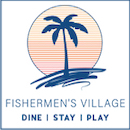














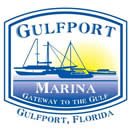

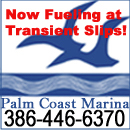















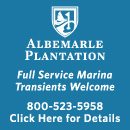

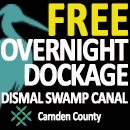

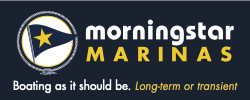
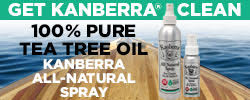

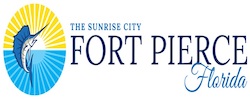
Be the first to comment!